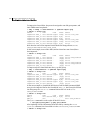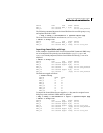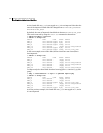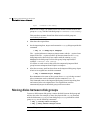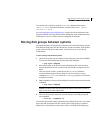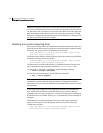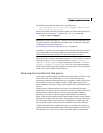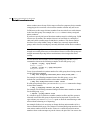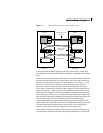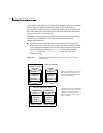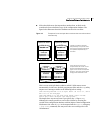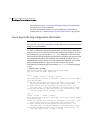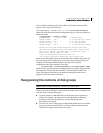
188 Creating and administering disk groups
Moving disk groups between systems
minor numbers near the top of this range to allow for temporary device number
remapping in the event that a device minor number collision may still occur.
VxVM reserves the range of minor numbers from 0 to 999 for use with volumes
in the boot disk group. For example, the rootvol volume is always assigned
minor number 0.
If you do not specify the base of the minor number range for a disk group, VxVM
chooses one at random. The number chosen is at least 1000, is a multiple of
1000, and yields a usable range of 1000 device numbers. The chosen number
also does not overlap within a range of 1000 of any currently imported disk
groups, and it does not overlap any currently allocated volume device numbers.
Note: The default policy ensures that a small number of disk groups can be
merged successfully between a set of machines. However, where disk groups are
merged automatically using failover mechanisms, select ranges that avoid
overlap.
To view the base minor number for an existing disk group, use the
vxprint
command as shown in the following examples for the disk group, mydg:
# vxprint -l mydg | egrep minors
minors: >=45000
# vxprint -g mydg -m | egrep base_minor
base_minor=45000
To set a base volume device minor number for a disk group that is being created,
use the following command:
# vxdg init diskgroup minor=base_minor disk_access_name ...
For example, the following command creates the disk group, newdg, that
includes the specified disks, and has a base minor number of 30000:
# xvdg init newdg minor=30000 c1d0t0 c1t1d0
If a disk group already exists, you can use the vxdg reminor command to change
its base minor number:
# vxdg -g diskgroup reminor new_base_minor
For example, the following command changes the base minor number to 30000
for the disk group, mydg:
# vxprint -g mydg reminor 30000
If a volume is open, its old device number remains in effect until the system is
rebooted or until the disk group is deported and re-imported. If you close the
open volume, you can run
vxdg reminor again to allow the renumbering to take
effect without rebooting or re-importing.
An example of where it is necessary to change the base minor number is for a
cluster-shareable disk group. The volumes in a shared disk group must have the
same minor number on all the nodes. If there is a conflict between the minor
numbers when a node attempts to join the cluster, the join fails. You can use the



